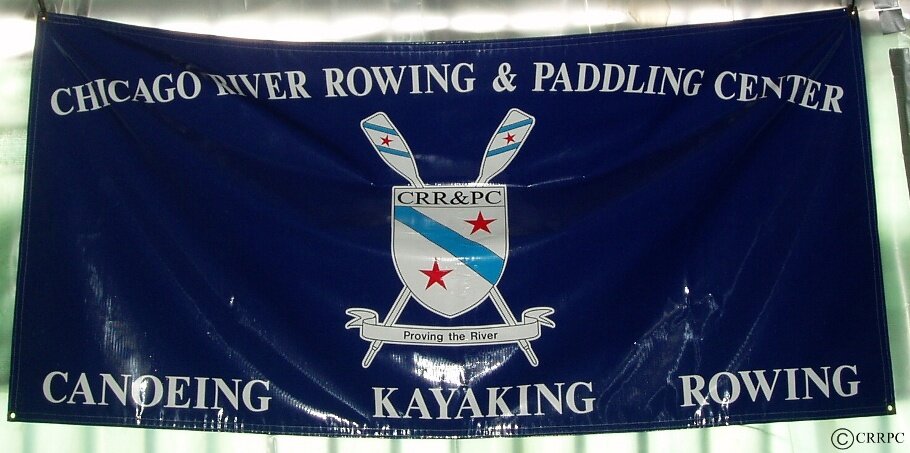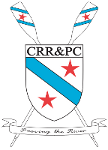History
This is a greatly condensed version of the richly storied history of the Chicago River Rowing & Paddling Center, and a brief description of how CRRPC’s operations have evolved over that 33 year history.
CRRPC’s motto is “Proving the River.” This phrase sounds quaint now, but way back in 1978 CRRPC was alone in, and frequently derided for, its quest to develop access to the Chicago River for human powered craft. CRRPC members had to prove to everyone else both the desirability and the viability of human-powered craft making daily recreational use of the Chicago River.
It was not clear to anyone but CRRPC members at that time, why anyone would want to recreate in that dirty, industrial, boring body of water? We observed that people crossing the bridges above rarely looked down onto the River; the assumption being that nothing interesting was happening there.
It was a long hard way from there to today, thirty-three years later, when both the desirability and the right of human-powered craft to share daily access to this urban waterway is taken as a given. That long hard way involved two battles: 1) to find a land location from which to launch and provide boat storage; and 2) to “prove” to everyone else that the River was suitable for human-powered craft.
Thanks to Grant Crowley, to whom we will be forever grateful, our first point of access to the Chicago River was at Crowley’s Yacht Yard on the South Branch in 1978. It was a harrowing place to launch rowing shells, requiring that the boats be carried down a steep raw incline and then walked into the murky water at the shoreline. But it was the only place available, and enough to resolve any lingering doubts among ourselves about whether the River was a great body on which to row and paddle.
Not long afterward, we discovered that there was an old coast guard station at the mouth of the River adjacent to the Lock, which had in essence been abandoned. To make a very long story short, we commenced a series of negotiations with the reluctant authorities to gain seasonal access, and suffered worrisome winter storage of our equipment at the Old Armory (now gone) and then a crumbling Navy Pier. We eventually found an ally in the Police Marine Unit, which also needed a boathouse for its operations, and in the early 1980s together persuaded the Harold Washington administration to take control of the building and allow both the Police Marine Unit and CRRPC to officially inhabit the building.
While less than an ideal for both the Police Marine Unit and CRRPC, this old boathouse was a superlative find in a world with no other viable options; and over time, despite numerous threats to continued operations there, both entities made the best of it for the next twenty years. As interest slowly grew in the River as an amenity, CRRPC fought hard to ensure that its operations on the eastern end of the Main Branch of the Chicago River were grandfathered into official planning documents.
When, following the events of 9/11, the federal, state and city governments raised the money necessary to rehabilitate the old Coast Guard Station into a first-class Marine Safety Station for use by the Marine Police, Conservation Police and Coast Guard, CRRPC was relocated in the fall of 2003 to it current location – a much smaller empty space under Lake Shore Drive, sandwiched between the LSD Bridge Tower and the Riverwalk Gateway.
Although this new space under Lake Shore Drive was originally intended to be an “interim” facility for CRRPC operations, it became the long-term solution after none of the numerous efforts over an eight year time span to create a facility at alternative locations on the Main Branch materialized. In the meantime, despite limitations of the space, the new space proved to be an ideal location for launching human-powered craft.
In its early years, CRRPC followed the typical model of rowing clubs, focused primarily on sweep rowing activities populated largely by collegiate rowing programs. Over time, however, with the growth of interest among collegiate rowers in continuing to row throughout their lifetime, new interest in learning to row among adults who had not experienced rowing in college, the growth of the sport of rowing among women, and increased interest by paddlers needing the same access to the Chicago River, CRRPC became a community focused organization..
Following relocation to its current facility under Lake Shore in late 2003, CRRPC’s model changed again. This new location was much smaller than the spacious bays it had occupied at the Old Coast Guard Station, precluding CRRPC’s ability to serve an expanding membership base in the same manner as it had previously. At the same time, the changed perception of the River as a desirable amenity took hold, resulting in an increased variety and volume of other traffic which underscored the critical need for CRRPC’s leadership and safety focused managed access program. With development of the Riverwalk in the same timeframe, another dimension was added to CRRPC, as it grew into its unique role of providing the colorful and exciting activity anchoring the east end of the Riverwalk.

